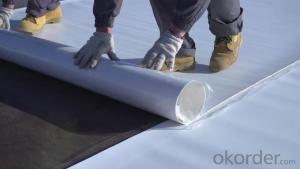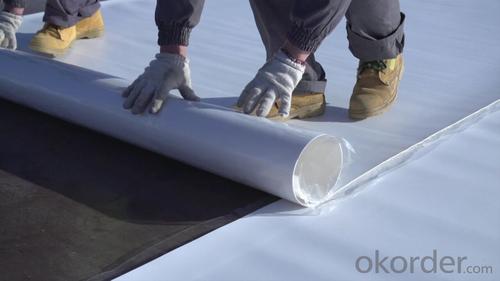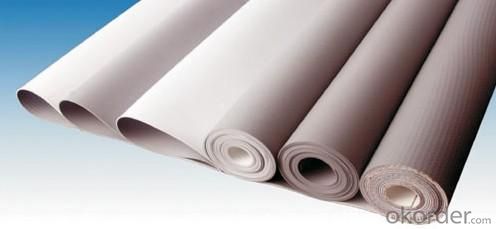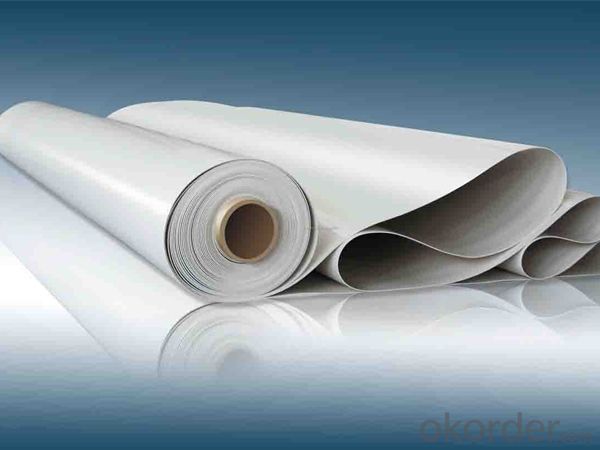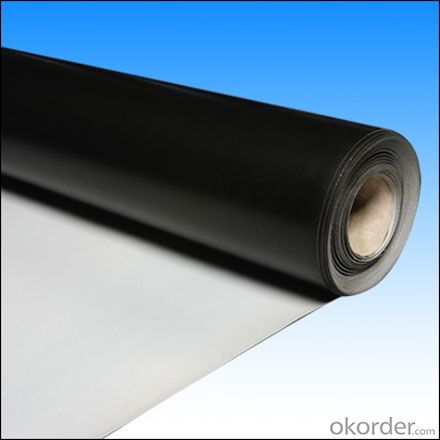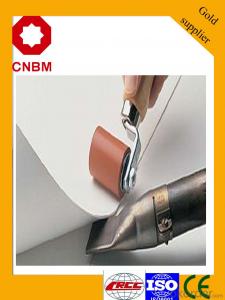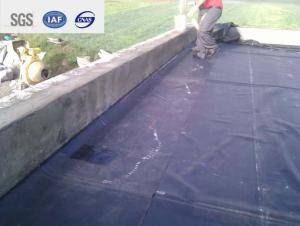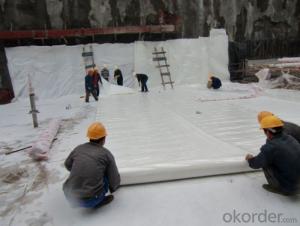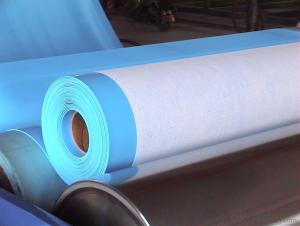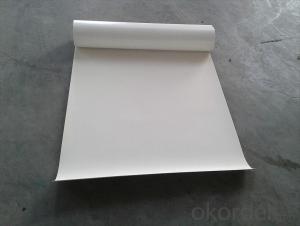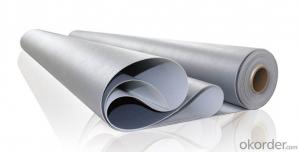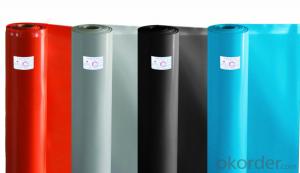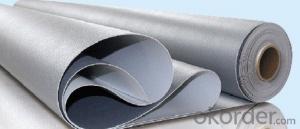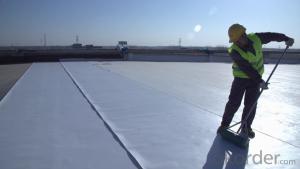TPO Waterproof Membrane for Roofing Market
- Loading Port:
- Qingdao
- Payment Terms:
- TT or LC
- Min Order Qty:
- 20000 m²
- Supply Capability:
- 600000 m²/month
OKorder Service Pledge
OKorder Financial Service
You Might Also Like
Product Description of TPO Waterproof Membrane for Roofing Market:
TPO Waterproof Membrane for Roofing Market is based on polypropylene and EP (ethylene-propylene) rubber polymerized together by using state-of-the-art polymer manufacturing technology. This technology enables BAIRUI TPO membranes flexible at low temperatures without the use of polymeric or liquid plasticizers. BAIRUI TPO membranes fall into two main types: Homogeneous TPO & Reinforced TPO. Reinforced TPO has a polyester mesh layer in the middle, which provides reinforced membranes with high breaking and tearing strength and puncture resistance."
Product features of TPO Waterproof Membrane for Roofing Market:
1.high reflectivity,anti-ultraviolet radiation,do not need to be protection,energy saving and environmental protection.
2.long-term weathering resistance,resistance to ultravoilet radiation and heat aging,density is small.
3..high elasticity,high strength,high elongation,good suppleness.
4.effectively resist harmful chemicals,industrial pollutants erosion,wear resistance,resistance to puncture.
5.with automatic quench.
Technical Parameters of TPO Waterproof Membrane for Roofing Market:
No. | Item | Index | |||
1 | mm≥ thickness of resin layer above inermediate tire mm ≥ | - | - | 0.4 | |
2 | tensile property | N/cm ≥ maximum tensile force N/cm ≥ | - | 200 | 250 |
MPa ≥ tensile Strength MPa ≥ | 12.0 | - | - | ||
≥ elongation at maximun tensile force% ≥ | - | - | 15 | ||
% ≥ elongation at fracture % ≥ | 500 | 250 | - | ||
3 | size change rate under heat treatment %≤ | 2.0 | 1.0 | 0.5 | |
4 | flexibility at low temperature | no crack at -40°c | |||
5 | unpermeability | 0.3Mpa,2h waterproof | |||
FRQ:
What is your main market?
Our Tpo Roofing Membrane with Superior Raw Material for Roofing Market sells very well in USA, United Kingdom, Austrilia, Canada, Japan, Pakistan, etc.
What is your advantage for Tpo Roofing Membrane?
With the most advanced production line, our good quality is based on superior material imported from America. We have different color available and could produce any color you want.
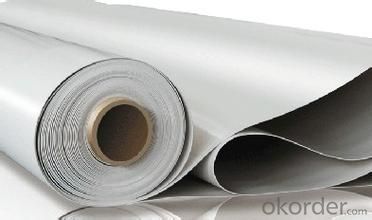
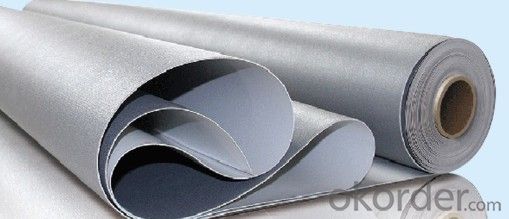
- Q: Can a waterproofing membrane be applied on any surface?
- No, a waterproofing membrane cannot be applied on any surface. It is important to assess the suitability of the surface before applying a waterproofing membrane. The surface should be clean, structurally sound, and free from any contaminants that could hinder the adhesion of the membrane. Additionally, certain surfaces may require specific preparation or priming before the membrane can be applied effectively.
- Q: Can a waterproofing membrane be used on both horizontal and vertical surfaces?
- Both horizontal and vertical surfaces can benefit from the use of a waterproofing membrane. These membranes have been specifically designed to create a barrier against water infiltration, regardless of the surface's orientation. They are widely used in a variety of applications, including roofs, foundations, basements, bathrooms, and swimming pools. Typically, these membranes are constructed using materials such as bitumen, rubberized asphalt, polyurethane, or PVC, which are highly resistant to water penetration. Whether it is a roof or a wall, a waterproofing membrane can effectively prevent water from seeping through and causing damage. However, it is crucial to ensure that the membrane is properly installed and adhered to the surface in order to achieve optimal waterproofing performance.
- Q: Can a waterproofing membrane be used for roofing?
- A waterproofing membrane is a suitable option for roofing and is commonly chosen for many roofing applications. Its purpose is to create a barrier that prevents water from infiltrating, thus preventing leaks and water damage on roofs. These membranes are typically made of durable materials like asphalt, synthetic rubber, or thermoplastic, which are resistant to water and can endure harsh weather conditions. They are installed on top of the roof surface, forming a seamless and watertight layer that keeps the interior of the building dry and safeguarded. Moreover, waterproofing membranes can be used on various types of roofs, including flat, sloped, and even green roofs. Ultimately, opting for a waterproofing membrane for roofing is an effective way to ensure long-lasting durability and protection against water damage.
- Q: Can waterproofing membranes be used on underground structures?
- Yes, waterproofing membranes can be used on underground structures.
- Q: How does a waterproofing membrane handle settlement or movement of the substrate?
- A waterproofing membrane is designed to accommodate settlement or movement of the substrate by possessing flexibility and elasticity. It can stretch or contract to a certain extent without losing its integrity or allowing water penetration. This ability allows the membrane to adapt to any changes in the substrate, ensuring long-term waterproofing performance.
- Q: Can waterproofing membranes be used on concrete slabs?
- Yes, waterproofing membranes can be used on concrete slabs. In fact, it is a common practice to apply waterproofing membranes to concrete slabs to protect them from water damage. Waterproofing membranes are designed to create a barrier that prevents water from penetrating the concrete surface. This is especially important for areas that are exposed to moisture, such as basements, balconies, or swimming pools. By applying a waterproofing membrane, the concrete slab is protected from water infiltration, which can lead to cracks, erosion, or mold growth. Additionally, waterproofing membranes can also enhance the overall durability and lifespan of the concrete slab.
- Q: Can a waterproofing membrane be used in hot climates?
- Yes, a waterproofing membrane can be used in hot climates. The membrane is designed to withstand various weather conditions, including high temperatures, and is effective in preventing water ingress regardless of the climate.
- Q: Can a waterproofing membrane be used for tunnels and underground structures?
- Yes, a waterproofing membrane can definitely be used for tunnels and underground structures. These membranes are specifically designed to provide a protective barrier against water infiltration, preventing moisture from penetrating the structure and causing damage. They are highly effective in ensuring the long-term durability and structural integrity of tunnels and underground constructions.
- Q: Does a waterproofing membrane prevent water damage to building materials?
- Yes, a waterproofing membrane is designed to create a barrier that prevents water from seeping into building materials, thus effectively preventing water damage.
- Q: Can a waterproofing membrane be used for green roofs?
- Yes, a waterproofing membrane can indeed be used for green roofs. Waterproofing membranes are commonly used as a crucial layer in green roof construction to prevent water leakage and protect the underlying structure. It provides an effective barrier against water infiltration, ensuring the green roof system remains watertight and preserving the integrity of the building.
Send your message to us
TPO Waterproof Membrane for Roofing Market
- Loading Port:
- Qingdao
- Payment Terms:
- TT or LC
- Min Order Qty:
- 20000 m²
- Supply Capability:
- 600000 m²/month
OKorder Service Pledge
OKorder Financial Service
Similar products
Hot products
Hot Searches
Related keywords
